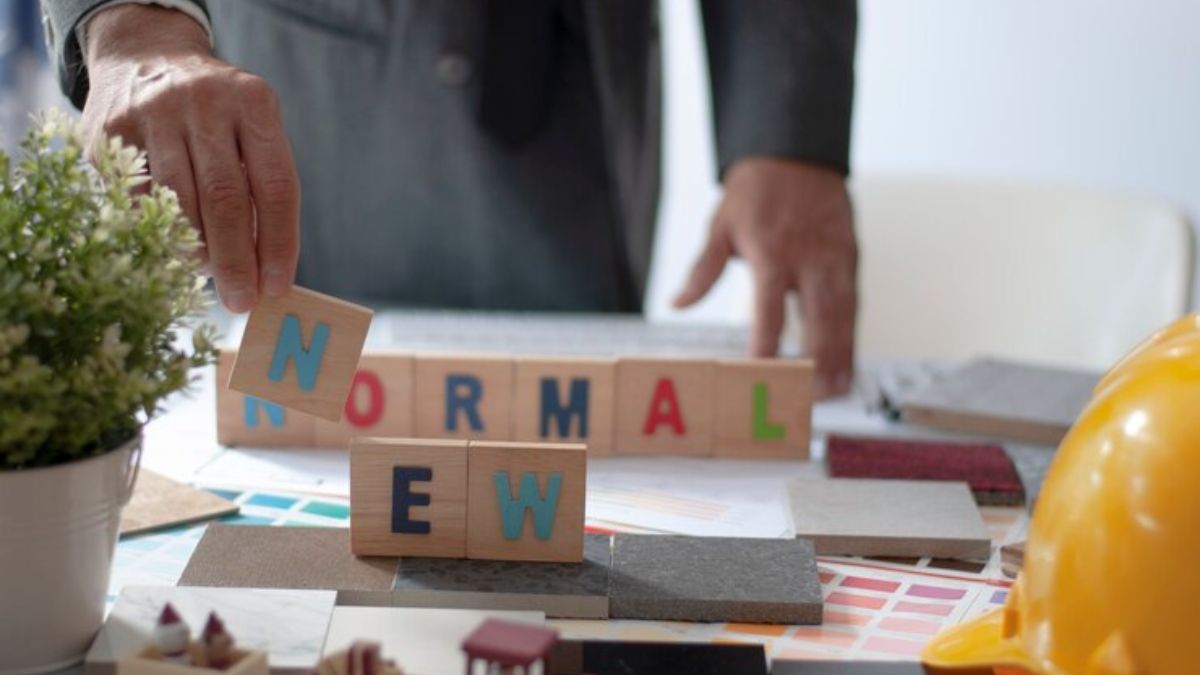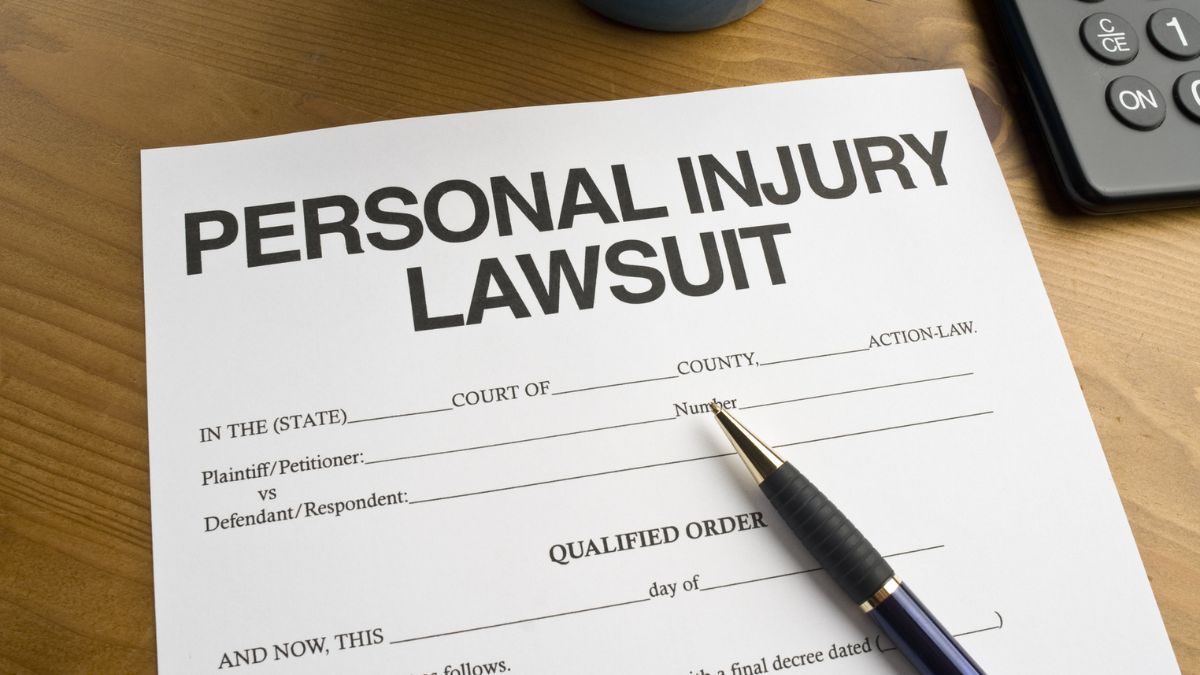TOPIC
6 Steps to Creating and Maintaining a Safe Workplace

A safe workplace benefits everyone. It protects employees from harm, enhances productivity and helps organisations comply with legal obligations. In the UK, health and safety regulations mandate management to uphold a safe and healthy environment, ensuring risks are minimised and managed effectively.
Failing to prioritise safety can lead to severe consequences, including accidents, injuries, financial penalties, or even damage to a company’s reputation. By following the six steps outlined in this blog, businesses can foster a secure environment for their employees while meeting their legal responsibilities.
Step 1: Conducting Regular Equipment Checks
Equipment plays a vital role in most workplaces, from small office gadgets to heavy machinery in industrial settings. However, faulty or poorly maintained equipment poses a significant safety risk. Regular inspections are essential, and workers should be aware of and be able to identify or conduct basic assessments to identify potential hazards before they escalate. Enrolling in training programmes and qualifying for a portable appliance testing certificate enables workers to spot and report potential hazards in the workplace.
Portable appliance testing (PAT) involves assessing electrical appliances to ensure they are safe to use. Appliances such as kettles, printers, or power tools are checked for faults like damaged wires or insulation.
A valid PAT certificate demonstrates that the organisation complies with the Electricity at Work Regulations 1989. It not only protects employees but also provides legal evidence of your commitment to safety. Regularly schedule PAT checks and maintain clear records to avoid compliance issues.
Step 2: Establishing Clear Health and Safety Policies
A written health and safety policy is a cornerstone of workplace safety. It should clearly outline the procedures, roles and responsibilities required to maintain a safe work environment. The Health and Safety at Work Act 1974 requires employers with five or more employees to document these policies.
Effective policies should cover:
- Emergency procedures (e.g. evacuation plans for fires or chemical spills).
- Hazard reporting systems so that employees can highlight risks immediately.
- Roles and responsibilities for managers, supervisors, and workers in maintaining safety.
- First aid provisions, including accessible kits and trained personnel.
Policies must be easily accessible and communicated to all employees. They must also be reviewed and updated regularly, especially when new risks emerge or regulations change. Appointing a competent person to oversee these aspects ensures consistent enforcement of safety protocols.
Step 3: Identifying and Addressing Workplace Hazards
Workplace hazards vary depending on the industry. In an office, risks may include ergonomic issues or electrical hazards, while construction sites face dangers like falling objects or exposure to harmful substances. Identifying and mitigating these potential hazards is crucial for preventing accidents.
The Management of Health and Safety at Work Regulations 1999 require employers to conduct regular risk assessments. These involve identifying potential hazards, determining who might be harmed and implementing measures to control the risks.
For example:
- Slip and trip hazards: Address wet floors or uneven surfaces promptly with warning signs or repairs.
- Machinery risks: Install safety guards and provide training on proper use.
- Fire safety: Keep exits clear and ensure fire extinguishers are serviced regularly.
Documenting risk assessments is a legal process and a valuable tool for tracking improvements and demonstrating compliance. Sharing findings with your team helps them understand the importance of safe practices.
Step 4: Providing the Right Safety Certifications and Training
Employees working in industries that handle hazardous substances risk respiratory issues or skin irritation. Acquiring a COSHH certificate trains staff in safe handling, storage and disposal.
Under the Control of Substances Hazardous to Health Regulations 2002 (COSHH), employers must assess risks and implement controls. COSHH certification covers key areas, including recognising hazards, using protective equipment and responding to spills.
This training not only reduces risks but also ensures compliance with UK regulations, fostering a safer and more responsible workplace. For businesses working with hazardous materials, it is a vital step in maintaining safety.
Step 5: Promoting a Culture of Safety and Communication
Management needs to establish systems and policies, while employees play a crucial role in upholding a safe environment. Cultivating a safety-first culture encourages everyone to prioritise well-being and reduces the stigma of reporting hazards.
Start by establishing clear channels of communication. This could include:
- Regular safety meetings to discuss concerns and solutions.
- Anonymous suggestion boxes for employees to share safety improvement ideas.
- Encouraging immediate reporting of hazards, no matter how minor they seem.
Acknowledging their efforts and rewarding employees who actively participate in workplace safety can strengthen this culture. Additionally, when workers feel appreciated and engaged, they are more inclined to follow safety protocols and take initiative in promoting safety.
A strong safety culture also improves morale and fosters trust within teams. Employees who feel safe and supported are less likely to experience stress or burnout, boosting overall productivity.
Step 6: Reviewing and Updating Safety Measures Regularly
Changes in equipment, processes, or regulations require safety measures to evolve. Scheduling periodic reviews of safety policies, risk assessments and equipment maintenance ensures that your workplace remains compliant and hazard-free.
Key actions to consider include:
- Conducting safety audits annually or after significant changes in operations.
- Monitoring updates to UK safety regulations to ensure compliance.
- Consulting health and safety professionals for expert advice.
Consistently assessing safety protocols allows workers to identify risks early and resolve problems before they escalate into major hazards. Staying proactive demonstrates a commitment to protecting your employees and staying ahead of compliance requirements.
Conclusion:
Creating a safe workplace is fundamental to fostering a positive and productive environment. This blog outlines six steps that offer a practical roadmap to achieving this goal.
Following these steps can help businesses can protect their employees from harm, reduce downtime caused by accidents and avoid costly penalties for non-compliance. Prioritising safety helps build trust and creates a workplace where everyone feels valued and supported.
TOPIC
How Wildlife‑Related Crashes Affect Liability And Insurance Claims

Every year, wildlife causes thousands of accidents on our roads. These crashes can be distressing and lead to unexpected consequences. When you collide with an animal, you’re not just facing potential damage to your car. You might also deal with serious injuries and complex insurance claims. Understanding your liability in these situations is crucial. Insurance policies often vary, and knowing what to expect can help you navigate this tricky situation. You may wonder about coverage for repairs and medical costs. Or perhaps you’re concerned about how this affects your insurance rates. Each situation is different, and the details matter. Learn about your rights and responsibilities to protect yourself better. It’s essential to stay informed. As you drive, stay alert and watch the road. Discover more about how wildlife-related crashes impact your insurance claims and liabilities. Your awareness could make a significant difference in your life.
Understanding Wildlife-Related Crashes
Encountering wildlife on the road can be sudden and frightening. Animals like deer, moose, and even smaller animals pose significant risks. The damage can be extensive, affecting both your vehicle and your peace of mind. These incidents often happen during dawn and dusk when animals are most active. Avoiding such crashes requires vigilance and quick reactions. However, accidents still occur despite your best efforts.
Liability in Wildlife-Related Accidents
Determining liability in wildlife accidents is often complex. Generally, no one owns wild animals, so the responsibility doesn’t fall on a specific party. If you collide with wildlife, liability typically rests with the driver. This means you could be responsible for repair costs and potential increases in insurance premiums. Knowing what your insurance covers is essential. Comprehensive coverage often includes animal collisions, while liability insurance does not. Reviewing your policy details can prevent surprises later.
Insurance Claims: What to Expect
Filing an insurance claim after a wildlife crash can seem daunting. Knowing the steps to take can ease the process. First, ensure everyone’s safety and contact authorities if necessary. Document the incident with photos and notes about the conditions and time. Contact your insurance company promptly to report the accident. Each insurer may handle claims differently, so understanding your policy helps. Coverage for repairs, medical costs, and even towing depends on your insurance type.
Comparing Coverage Types
| Coverage Type | Includes Wildlife Collisions | Repair Costs Covered |
| Liability Insurance | No | No |
| Comprehensive Insurance | Yes | Yes |
| Collision Insurance | Sometimes | Depends on the provider |
This table shows how different coverage types handle wildlife collisions. Comprehensive insurance is your safest bet for full coverage in these scenarios. Always review your policy documents to understand your coverage scope.
Prevention and Safety Tips
Preventing wildlife crashes involves both awareness and action. Stay attentive, especially in areas with high animal activity. Use high beams when safe to spot animals earlier. Slowing down can give you more time to react. In areas with frequent wildlife crossings, be extra cautious. Whistles or devices claiming to deter animals are often ineffective. Instead, focus on driving carefully and maintaining control at all times. For more safety tips, visit National Highway Traffic Safety Administration.
The Role of the Community
Communities can play a part in reducing wildlife-related accidents. Local measures like installing signs or creating wildlife corridors can help. Educating drivers about high-risk areas and times is effective. Collaborating with local wildlife experts to understand animal patterns can also reduce incidents. Community effort is key to safer roads for everyone.
Conclusion
Wildlife-related crashes are unpredictable but manageable. By understanding your insurance policy and knowing your responsibilities, you can better handle these incidents. Prevention is key, but when accidents happen, being prepared helps. Ensure your policy covers potential wildlife encounters. Stay informed and cautious on the road. By taking these steps, you protect yourself and others. Drive safely and stay aware to minimize risks and enjoy peace of mind.
TOPIC
What To Do If A Drunk Driver Causes A Fatal Accident

A fatal accident involving a drunk driver shatters lives. If you face this tragedy, knowing your next steps is crucial. This guide helps you navigate these challenging moments. First, ensure your safety and others around you. Contact emergency services immediately. Authorities need to secure the scene and gather evidence. Then, reach out to family or friends for emotional support. The impact of such an event can be overwhelming. Seek professional legal advice promptly. Legal experts can help you understand your rights and options. Their assistance may be vital in ensuring justice for your loved one. Document everything you remember about the incident. Details can be essential later. Also, consider seeking counseling. Emotional recovery is as important as legal resolution. Addressing these steps eases the burden during this difficult time. Being prepared supports you in handling this tragic situation with strength and clarity. You are not alone in this journey.
Immediate Steps After the Accident
Once the scene is secure, focus on gathering information. Collect the names and contact numbers of witnesses. Take photos of the accident site if possible. These will aid in building your case. Understandably, emotions run high. However, clear documentation is crucial. Law enforcement will compile a report. Request a copy for your records. This report contains essential details. It will be crucial for legal and insurance purposes.
Legal Considerations
Engaging with the legal system can be daunting. Yet, it is an important step forward. Secure a reputable attorney experienced in dealing with drunk driving incidents. They will navigate the complexities of the law on your behalf. Start this process early. Legal procedures often require extensive time and effort. The attorney will help file claims and represent you in court if necessary.
Emotional and Psychological Support
Processing grief and trauma requires time and support. Many find comfort in speaking with counselors or support groups. There are professionals trained to help you through this difficult period. Friends and family members are also invaluable. Be open about your needs and feelings. They can offer a listening ear and necessary support.
| Support Option | Advantages | Disadvantages |
| Professional Counseling | Expert guidance, Confidential | Costly, Requires scheduling |
| Support Groups | Shared experiences, Community support | Availability varies, Less personalized |
| Family and Friends | Immediate availability, Emotional bond | May lack expertise, Emotionally invested |
Financial and Insurance Matters
Accidents lead to unexpected financial burdens. Insurance claims need to be filed promptly. Contact your insurance company to start the process. Provide them with the accident report and any additional information. It is also wise to consult with your legal advisor during this stage. They can ensure all documents are appropriately handled. In some cases, the process may lead to compensation. This can aid with medical or funeral expenses.
Long-Term Recovery and Resolution
Healing from this tragedy takes time. Some days will be harder than others. Establishing a routine can help restore a sense of normalcy. Engage in activities that bring you relief and comfort. Consider joining initiatives that advocate against drunk driving. Contributing to a cause may offer a sense of purpose.
Additional Resources
For more guidance, visit the National Highway Traffic Safety Administration (NHTSA). They offer resources on dealing with drunk driving incidents. You can also explore the Mothers Against Drunk Driving (MADD) website for support networks and advocacy opportunities.
Dealing with the aftermath of a drunk driving accident is a profound challenge. Each step taken brings you closer to resolution and healing. Reliable support and information make a significant difference. Remember, while the journey is difficult, you have resources and people ready to help. By taking active steps, you honor the memory of your loved one and contribute to a safer community.
TOPIC
How To Prove Liability In A Las Vegas Personal Injury Lawsuit

When you’re injured in Las Vegas, proving who is responsible matters. Understanding how to prove liability is crucial. This guide breaks down what you need to know for a personal injury lawsuit. You might feel overwhelmed, but remember, you are not alone. Liability determines who pays for damages and injuries. You need evidence to show fault clearly. FriedmanInjuryLaw offers support in gathering this evidence. First, you need to collect reports and witness accounts. Second, document medical records and expenses. Finally, maintain communication records with all involved parties. Each step helps reinforce your case. It’s essential to stay focused and organized. Legal processes may seem daunting, but staying informed helps you reclaim control. Everyone deserves justice and the means to heal. You can navigate this challenge with careful preparation and support. This blog offers insights to help you through each stage of the process. You hold the key to your case’s success.
Gathering Evidence
Evidence is the backbone of your case. To prove liability, compile detailed information about the incident. Start with the police report. This document provides an official account of the event. Witness statements strengthen your case. They offer unbiased perspectives on what happened. Photos of the accident scene can capture crucial details. Visual evidence can clarify how events unfolded.
Medical Documentation
Your injuries are a critical part of the evidence. Medical records document the extent and impact of your injuries. They connect your injuries to the incident. Keep all medical bills and related expenses. This information supports claims for financial compensation.
Communication Records
Keep a detailed log of all communications. This includes interactions with insurance companies and other parties. Emails, letters, and phone call notes can reveal valuable information. They can show offers, admissions, or statements that affect responsibility.
Types of Liability
Understanding liability types helps you build a stronger case. Here are common types:
- Negligence: Failing to act with reasonable care.
- Strict Liability: Responsibility without proof of fault, common in product liability cases.
- Intentional Wrongdoing: Harm caused on purpose.
Comparative Negligence in Nevada
Nevada follows a comparative negligence rule. If you share some fault, it affects your compensation. For example, if you are 20% at fault, your damages reduce by 20%. Understanding this rule is vital for realistic expectations.
Comparison Table: Types of Liability
| Type | Description | Proof Required |
| Negligence | Lack of reasonable care | Prove negligence elements |
| Strict Liability | Liability without fault | Show defect and harm |
| Intentional Wrongdoing | Harm by deliberate action | Prove intent |
Legal Support and Resources
Pursuing a lawsuit is complex. Legal assistance can guide you. Experienced attorneys know the process well. They can help you build your case effectively. USA.gov offers resources for finding legal aid in Nevada.
Conclusion
Proving liability in a personal injury lawsuit requires diligence and determination. By gathering comprehensive evidence, documenting medical details, and understanding liability types, you can build a compelling case. Resources like LawHelp.org provide valuable information for those seeking legal guidance. Stay organized and informed throughout the process. With careful preparation and support, you can achieve the justice you deserve.
-

 BLOG1 month ago
BLOG1 month agoIZoneMedia360 .Com: Exploring the Features and Benefits
-

 BLOG5 months ago
BLOG5 months agoAbout Blog TurboGeekOrg: A Go-To Hub for Tech Enthusiasts and Latest Innovations
-

 BLOG5 months ago
BLOG5 months agoWhat is a Golden Transit in Magi Astrology?
-

 BLOG1 month ago
BLOG1 month agoA Complete Guide to ProcurementNation.com Shipping
-

 ENTERTAINMENT5 months ago
ENTERTAINMENT5 months agoTyquaez Pickett: A Rising Star in the Entertainment World
-

 NEWS1 month ago
NEWS1 month agoChloe Berger News: Insights on Employee Rights and Talent Retention
-

 BLOG4 months ago
BLOG4 months agoWho Is Hall Sinclair? The True Story of Olivia Colman’s Son
-

 HOME1 month ago
HOME1 month ago5StarsStocks.com Nickel: Invest for a Bright Future
